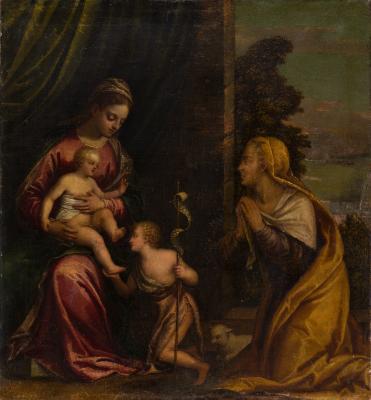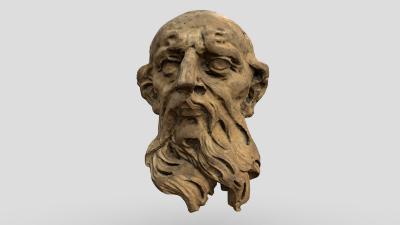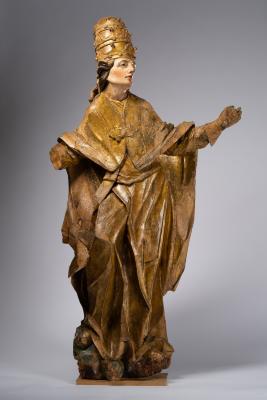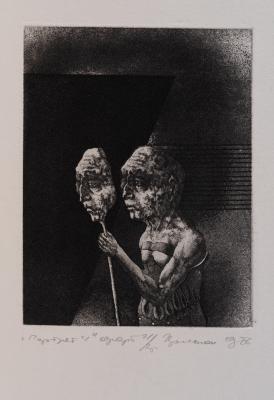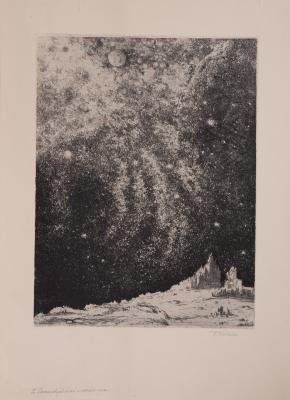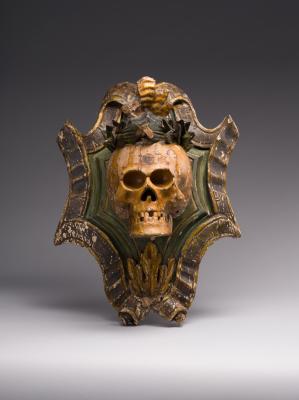The work is from the Roman series. The first version of the engraving was performed in 1815; later, in 1816, its black and white version was issued in the album Nuova Raccolta di Cinquanta Costumi Pittoreschi incisi all 'acquaforte da Bartolomeo Pinelli Romano, Nicola de Antoni impresse, Ignazio Pavon Offre e Dedica, Roma 1816. The next version (almost unchanged and similar to the Lviv engraving) was issued in the album Nuova Raccolta di Сinquanta Costumi Pittoreschi… (New Collection of Fifty Picturesque Costumes) published by Giovanni Scudellari in Rome in 1817. The Lviv engraving belongs to a simpler version of the composition dated 1815. In the foreground on the left, one can see a family of young peasants with two children. They walk along the mountain path with their few possessions, leaving their native village. All characters are dressed in traditional clothes. A man is wearing a black hat, red vest, blue knee-length trousers, and white stockings. On his shoulder, he is holding a stick with a cloth thrown over it. The woman wears a traditional flattop headscarf, a vest with an apron, and a crimson skirt. On her head is a wicker basket-cradle with a child sleeping in it; she is holding the cradle with her hand. To the left of the couple, their eldest daughter is walking with some things tied into a knot on her head. All travellers are wearing ciocie, traditional Ciociaria shoes. The action is taking place on a hill. In the foreground, on the left, there is a huge black tree. On the right is a boulder through which a young tree grows. In the distance, a forested mountaintop is depicted in blurred blue tones.
Ciociaria is an area in the Lazio region southeast of Rome that does not have clear boundaries. The name is ethnographic, derived from ciocia shoes typical of that area. At present, Ciociaria is most commonly identified as the province of Frosinone.












